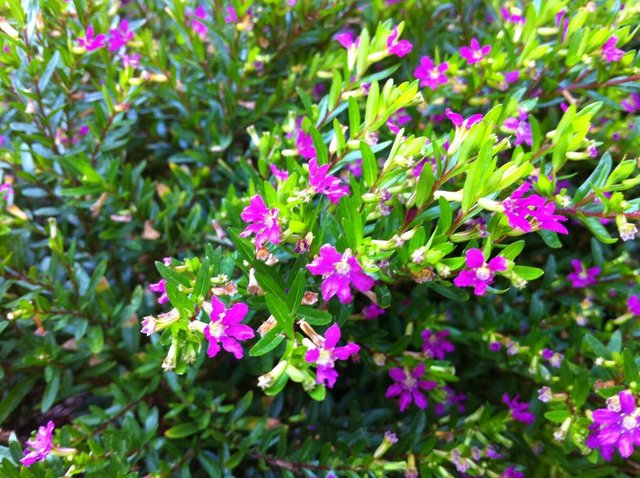Cuphea comes in a wide variety of colors, shapes, and flower sizes. Its small, often tubular blossoms wear shades of orange, bright yellow, red, white, purple, and neon pink in differing combos. Many of these flowers feature large modified petals that give the appearance of ears. Up close, the flowers can resemble mice or bats hence its common names Mouse flower and Bat flower. Because of its small size and dense habit, cuphea makes a welcome addition to mixed containers and garden plantings without diminishing the effects of other plants. Cuphea attracts both hummingbirds and pollinators.


Native to the Americas, cuphea thrives in the heat of summer and when planted in well-drained soil. While it prefers consistent moisture throughout the growing season, once this plant is established it can tolerate drought and continue to impress with its large number of flowers. Fertilize cuphea regularly throughout the summer for the best, biggest, and most consistent display. 
Even though there are more than 250 species in the family, cuphea is still considered a relative newcomer in the world of ornamental horticulture. In the past few years, breeders have introduced new varieties that create larger, showier flowers on plants with the same great heat tolerance and longevity as before. Ongoing research on the use of this plant for oilseed production seeks to lessen reliance on coconut and palm oils, which destroys tropical habitats. Additional research shows promising results for use of cuphea as a rotational crop; it appears that wheat and corn yields increase when those grains are grown after a year of raising cuphea.


Source
Silly Sausage Award ! Very nice selection of Pics.